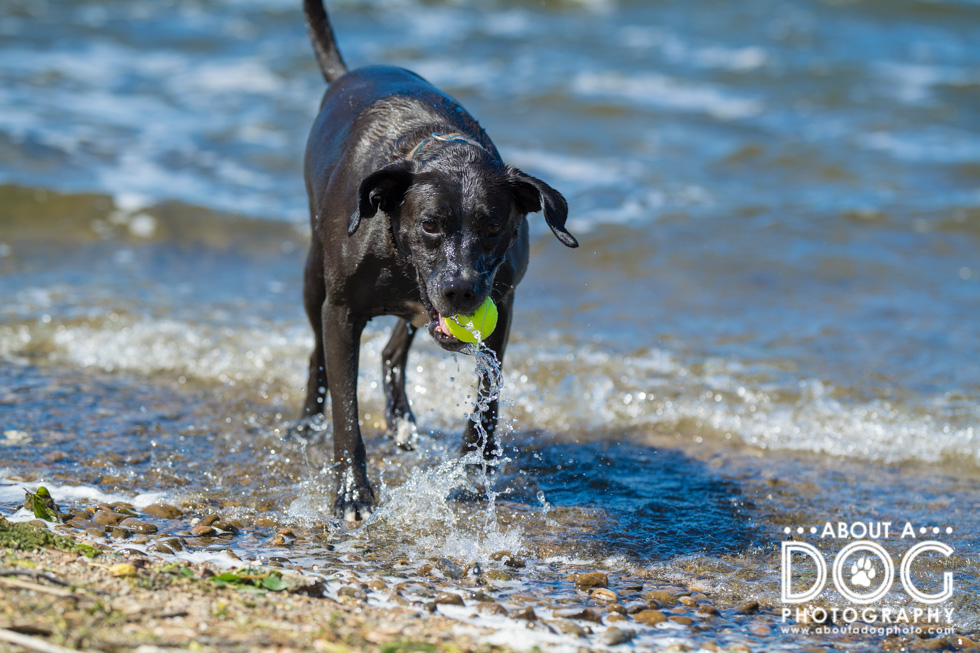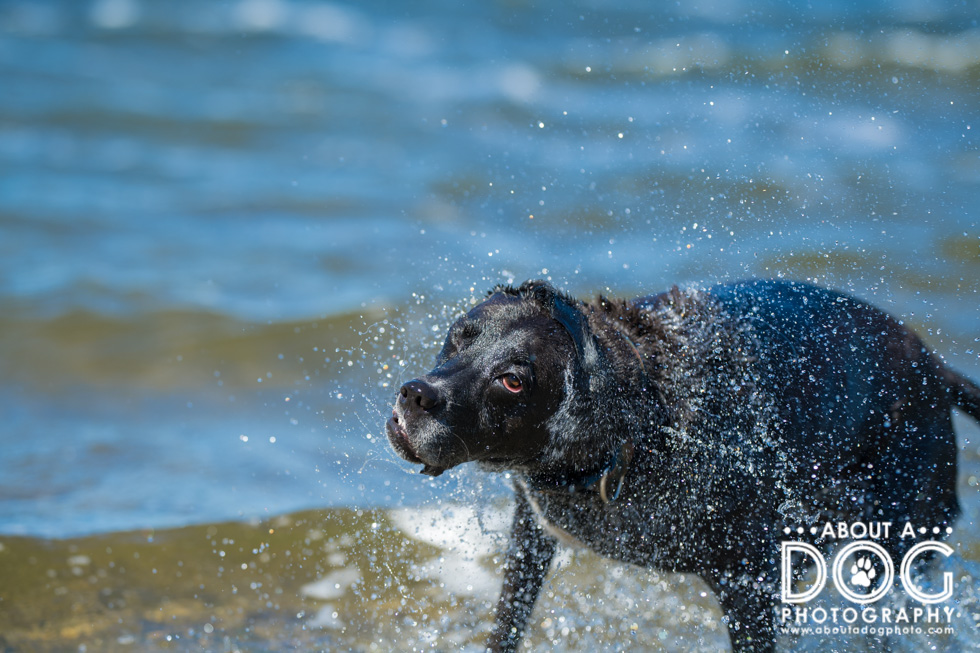Before your dog jumps in the lake, here’s what you need to know – temperature matters, why you need to bring fresh water and the status of algae!
Lake temperatures?
For swimming, the ideal temp for dogs seems to be 40s-50s at the minimum for shorter durations (up to 20 mins). Here in Minnesota, our 11,842 lakes likely won’t hit warmer water until July with the north shore along Lake Superior staying in the 50s and under throughout the summer. Brisk!
(A quick check puts water temp of lakes around St. Cloud at 49˙F to 62˙F. I found the LakeMonster Map that’s a neat tool for lake temps. If you head to MN you’ll see a TON of blips marking the lakes we have!)
How can you tell if the lake is too cold?
Dip your toes in! If you can’t stand & wade into the lake for a span of time without freezing your toes off, then most likely the water is a bit to chilly for your dog (or too chilly for a long swimming session).
Otherwise there’s an old “rule of thumb” that says air temp + water temp need to be at least 100 degrees before it’s swimmable for your dog. So water temp of 62 + air temp of 57 = 119 – swimmable for your dog! (Brisk for you though!). Also remember that nearer to the shoreline will be warmer than beyond the dock depths in most lakes.
Certain dogs will be more prone to being sensitive to cold water swimming. Small breeds, short-haired dogs, puppies & senior dogs all tend to be more sensitive to colder water temps. If your dog has health issues, it may be best to avoid a dip in the lake and opt for a warm kiddie pool instead. Double coated breeds, retrievers & sporting dogs can handle a bit more cold, though they too can get chilly in brisk water the longer they are swimming.
If your dog insisting on jumping in just after the ice clears the lake in the early spring , you may want to limit their swim time (under 20 minutes) to make sure your dog doesn’t get too cold and risk getting hypothermia.

Signs of hypothermia:
- shivering
- lethargy
- stiff muscles
- pale gums
- lack of coordination or stumbling
- fixed and dilated pupils
- low breathing & heart rates
- collapse57
After a cold swim:
- Dry your dog with towels and get him warmed up. If you’re not at the cabin, then crank up the heat in your car to a toasty level.
- Once towel dried, burrito your dog in a cozy warm blanket.
- Offer your dog a warm drink – milk or chicken broth are good options (similar to how we sip a hot cocoa when we’re chilled)
If the shivering persists for 30-45 minutes after being dried off, wrapped up cozily & warmed with warm drinks bring your dog to the vet ASAP!

Bring fresh drinking water!
Pack a jug of water for you & your pup when you head to the lake. This ensures you both stay hydrated and your dog avoids drinking too much lake water. Keep your dog away from stagnant water as it often contains yucky organisms that can cause diarrhea, Leptospira and kidney damage.
With Leptospira is a bacterial infection that spreads in the bloodstream. It’s often found in stagnant water, or muddy and marshy areas frequented by wildlife. It is transferred from infected wildlife via contact with their urine – usually found in contaminated water sources.
There is a vaccine your dog can get but it only protects against 4 strains of Leptospira (there are a couple hundred varieties) and may only lessen the symptoms vs prevent lepto. Do research & consult your vet to see if your dog needs a lepto vaccine for swimming in the lake. (It’s a non core vaccine – I don’t recall if any of my lake loving pups ever had it.)
The best way to avoid the yuckies – bring fresh water for you and your pup!
Blue-green algae – beware!
Luckily blooms of algae in Minnesota often come and go quickly as they are dispersed by rainfall, wind shifts or cooler temperatures that disrupt the algae’s growth.

Lifejackets – do you need one?
Not every dog is a Newfie or lab with strong swimming skills. The average dog can swim consistently for about 20 minutes before they begin to fatigue, which can lead to drowning. Adding a lifejacket into your dog’s beach time (as well as boating time) will help keep them floating in the case that they lose steam. Additionally a lifejacket is perfect for dogs who aren’t strong swimmers or just learning to swim.
Lifejackets feature 1 or 2 handles, various points of adjustability for perfect fits and some have D rings that allow you to attach a lead to the lifejacket – you can reel in the wayward swimming pup or rein in your dog if you think they need a swimming break.
Too bulky for the running and playing of your pup? Opt for a life vest instead!
Things to bring when headed to the lake:
- Fresh water for you & your pup
- Toys that float & toys that sink
- A long lead (check the beach rules) for reeling in your pup if need be
- Towels – pending on the size of your dog 1-5 will do the trick! Don’t forget one for you!
- Something to provide shade (umbrella or small pop up canopy)
- Camera for capturing the splashing adventures!

Before your dog jumps in the lake, here’s what you need to know:
- Lake temperature matters!
- Fresh drinking water is important
- Beware of blue-green algae
- A life jacket will come in handy
- A visit to the lake is TONS of fun for water loving pups!
(Bender – nope, Axle & Icey – LOVERS of the water, Mick – enjoyed splashing)
We’re in a blog ring! Next pop over to: Canberra Dog Photographer, Ina Jalil of Ina J Photography shares photos of dogs of Canberra splashing in Lake Burley Griffin.

Hi!
Do you mind if I share this info on social media?
— Jody
Awesome points! Really informative. Going to bookmark this one. Thanks for sharing all these great tips.
Awesome tips! I love the water + air formula and will use that going forward. 😁 I also love the reminder for people to bring towels for themselves. They always forget.
Wow, such a great post with so much useful information – every dog owner in Minnesota should bookmark this page! We don’t often have to worry about anything being “too cold” down here in TX, but I’m going to keep this information handy!